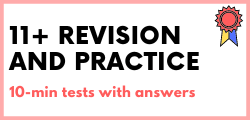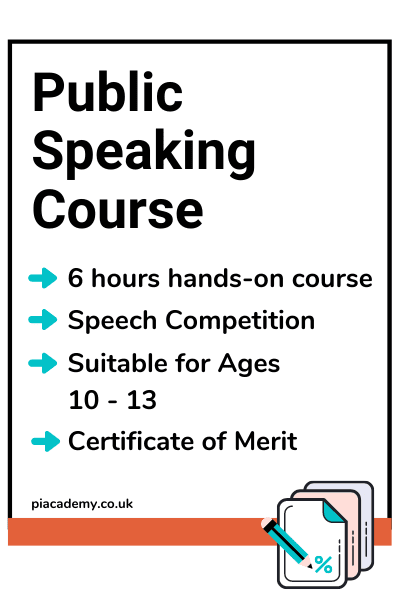Introduction
Voice Modulation – also called tonality – is an important aspect of Public Speaking. People who know how to modulate their voices are very effective speakers. They can have the audience hanging on to their every word. They can convince the audience of their own point of view. They can spur the audience to take action.
Table of contents
- Introduction
- Voice Modulation – What it is?
- Tips for better Voice Modulation
- Exercises to Improve Voice Modulation
- Conclusion
Therefore it is very important for a public speaker to use this tool in making speeches, whether on formal occasions like a conference, interviews or at informal gatherings like a wedding or birthday party.
Voice Modulation – What it is?
The terms voice modulation and tonality refer to the control you have over your voice. To sound impressive, a good speaker uses the components of voice modulation – pace, tone, emphasis, pitch, volume and others – so that his or her speech sounds interesting. Without voice modulation, you will sound flat and boring. And a flat and uninspiring voice is sure to turn the audience off. Listeners will literally stop listening to a voice that is flat and monotonous.
Therefore it is important for you to learn the basics of tonality and use it to speak effectively and impressively. It is not an easy skill to master but with enough practice, you should be able to modulate your voice so that listeners are impressed with your speech and more receptive to your ideas.
Tips for better Voice Modulation
Tonality cannot be developed overnight. It takes diligent practice to master this essential aspect of public speaking. Here are some tips to help you modulate your voice and speaking skills more effectively.
Voice Modulation Tip 1- Vary the pitch of your voice
Pitch refers to the “depth” of your voice. When we speak, we actually hit a musical key with our voices. Pitch simply refers to the key in which we are speaking. Thus, a lower pitch results in a deeper voice and a higher pitch results in a higher tone. At its extreme, a high pitch may sound shrill and irritating.
However, this does not mean that you should speak in a lower pitch all the time. That would make your voice boring again! Instead, you should work at using varying pitches to keep your voice interesting. Even so, you should avoid mechanical changes of pitch, such as speaking every other word at a lower pitch. This makes the voice sound sing-song and can be very irritating for the listener.
It pays to listen to great speakers to see how they use pitch in their speeches. Once you become aware of pitch, you will notice how they use a lower pitch for certain parts of their speeches or even sentences and when they use a higher pitch.
Voice Modulation Tip 2- Pay Attention to Pacing
Pacing refers to the rate at which you speak. Speak too fast and the listener has to struggle to understand you. Speak too slowly and you’ll put your audience to sleep!
Once again, the same pace throughout the speech will make it sound monotonous and boring. Instead, good speakers vary the pace at which they speak, sometimes speaking slightly faster than normal, sometimes slowing down so that their words have an impact.
When you speak faster, it imparts a sense of urgency to what you are saying. Speakers who want their audience to take action quickly will often quicken the pace of their speech. On the other hand, speaking slowly can give a sense of importance to your words. A slow, measured pace is usually taken to mean that the audience must pay attention because what you are saying is important.
Voice Modulation Tip 3- Use Emphasis Effectively
Emphasis refers to the importance you give to words or groups of words. There are several ways in which experienced speakers emphasise their words. One way is to speak the word to be emphasised slightly louder than the rest of the sentence. In other words, you can use volume to emphasise important ideas. However, this does not mean that speaking softly cannot be effective. In fact, some speakers emphasise words by speaking them softer than the rest of the sentence. Whether to emphasise a word by speaking it louder or softer will depend on the idea you wish to convey. Words that convey a “softer” emotion can be spoken more softly. Words that convey a “harder” emotion can be spoken slightly louder than normal.
A good way to learn emphasis is by framing a question for the sentence in which you need a word or two emphasised. For example, if your sentence is “We must act on this,” you can easily decide on emphasis by asking yourself the relevant question, such as:
- To emphasise that WE must act, your question to yourself will be “WHO must act?” You will automatically emphasise the “we”.
- To emphasise the need to act, your question will be “WHAT must we do?” Again, you will see that you will automatically emphasise the word “act” in your sentence.
Another way to use emphasis is with the use of pauses. If you pause before and after a word, it automatically gains importance in the mind of the audience.
For example, take the sentence “There are too many vehicles on the streets today”. If you want to emphasise “too many”, simply say the sentence the following way:
“There are (pause) too many (pause) vehicles on the streets today.
You will find that the words “too many” are automatically emphasised in this manner.
Tip 4- Improve Your Inflexion
Inflexion refers to whether you raise or lower the pitch of your voice at the end of a sentence. In case you are asking a question, you will usually use upward inflexion. This means that the last word in your question will be raised in pitch. If you are making an emphatic statement, you will usually use downward inflexion at the end of your statement. That means you will lower the pitch of your voice at the last part of the statement.
Inflexion is very useful in conveying meaning and completeness to the audience. If, for example, you use upward inflexion in a statement, it may sound as if you are going to continue the sentence after a pause.
However, you need not use inflexion mechanically. A great way to ask a question and still sound confident is to use upward inflexion on the second last part and downward inflexion on the last part of your question.
For example, take the question “Where are the trees?”
The usual inflexion is to raise the pitch on the word trees. Now try it by using upward inflexion on the word “are” and downward inflexion on the words “the trees”. You will find that it still sounds like a question but your voice sounds much more confident.
Exercises to Improve Voice Modulation
We have already seen one exercise to improve voice modulation, which is the asking of questions to determine which words to emphasise. Here are some more exercises:
- Take a sentence and practise emphasising different words in that sentence. Note how the meaning changes subtly with each emphasis. For example, “He was a teacher”:
- He was a teacher
- He was a teacher
- He was a teacher
- To practise pitch changes, imagine you are throwing your voice from different parts of the body. For a higher pitch, for example, imagine you are aiming your voice at your head. For a normal pitch, imagine you are aiming it straight ahead. For a lower pitch, imagine you are aiming it at your chest, then at your stomach. Note how the pitch changes each time.
- Learn to breathe deeply and to control your breathing. Voice depends heavily on a firm breath. The more you are in control of your breathing, the steadier and firmer your voice will be. A good exercise to learn breath control is to take a deep breath, then count out aloud and see how far you can go. Over a period of time, you will notice that you are able to count to higher and higher numbers with just one breath. That means your voice is now getting good breath support. That will help you modulate your voice better through pitch control, volume control and emphasis.
- Practice pitch changes by starting a low hum, then slowly opening your mouth and raising the pitch of your voice as your mouth opens wider.
- Tongue twisters are another excellent way to improve tonality since they help make your voice clearer. Start by saying the tongue twister slowly so that each word is clear. Then slowly increase the pace. Each time you increase the pace, make sure each word is clear. Soon you will be able to say the tongue twister rapidly without losing out on clarity. There are many tongue twisters available on the internet for your practice.
- Take singing classes if you can. Singing is excellent for voice development and consequently, voice modulation.
Conclusion
Voice modulation is an important tool in Public Speaking. It relies on pace, pitch, emphasis, volume and other elements. These can be practised for improved voice modulation. There are several exercises available to help strengthen voice modulation.


















































